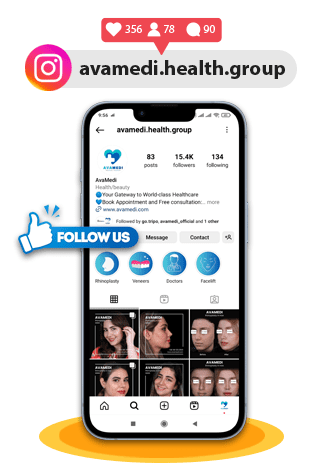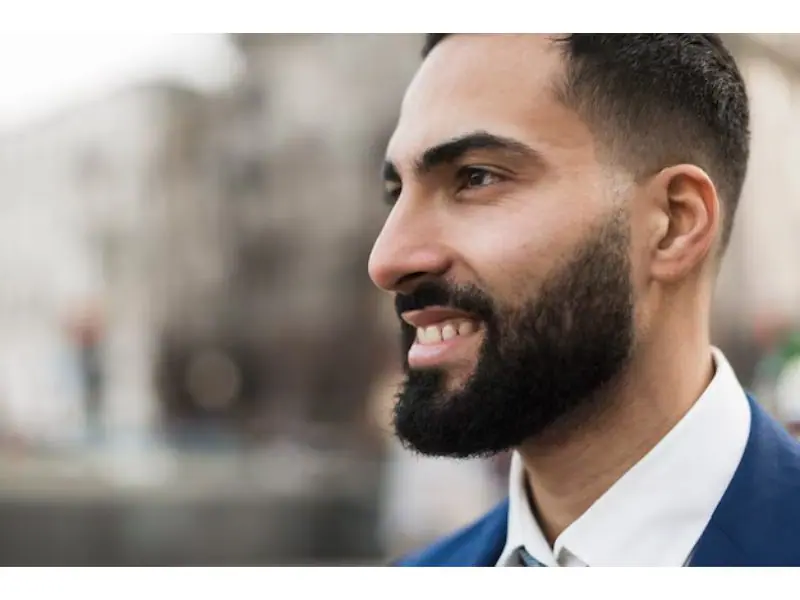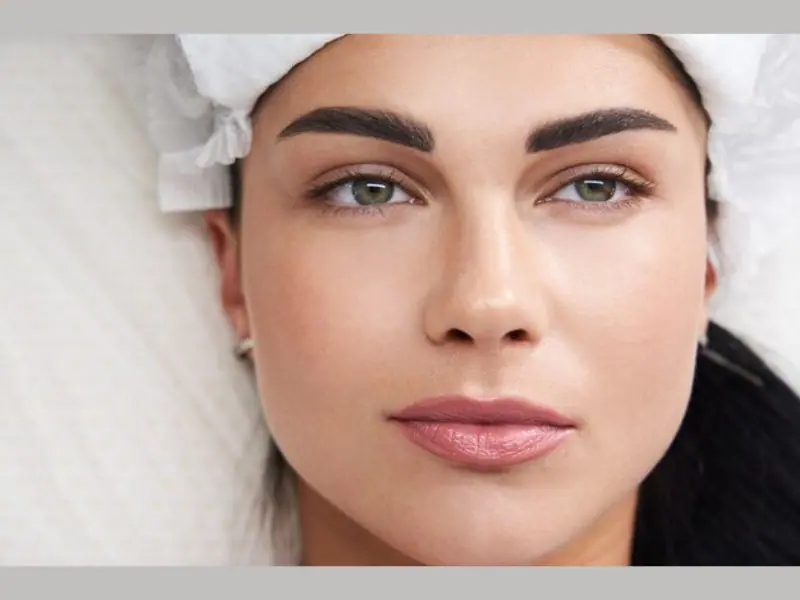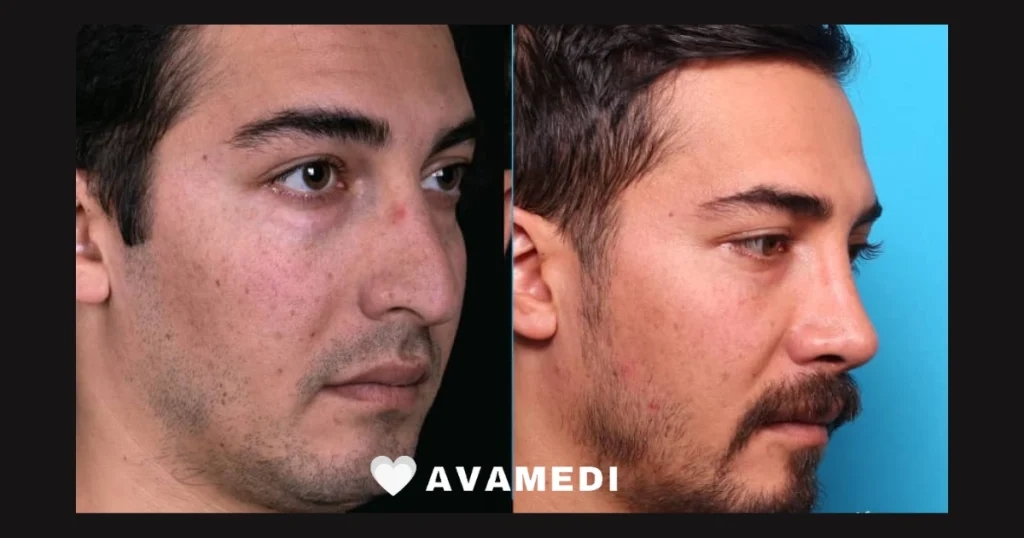Middle Eastern Nose
The “Middle Eastern nose” is a term often used to describe a nose shape that might be more commonly found among individuals from the Middle East. It’s important to approach this description with sensitivity and an understanding that physical traits can vary significantly among people of any region. Persian Nose Job is one of the most popular types of Middle Eastern nose surgery.
What is the nose of the Middle East like?
- Larger or Prominent: Some individuals from the Middle East may have noses that are larger or more prominent in relation to other facial features.
- Straight or Slightly Arched Bridge: The bridge of the nose might be straight or have a gentle arch.
- Defined Nasal Tip: The tip of the nose might be well-defined or slightly rounded.
It’s crucial to note that describing a “Middle Eastern nose” as a singular feature can be an oversimplification. The diversity within the Middle East means that nose shapes, like other facial features, can vary widely among different ethnicities, cultures, and individuals. Physical traits, including types of noses, are influenced by genetics, environment, and a multitude of other factors, making it important to appreciate and respect the uniqueness of each individual’s appearance.
What are Middle Eastern face features?
Middle Eastern facial features can vary widely due to the diverse ethnic, cultural, and genetic backgrounds within the region. However, there are some common features often associated with individuals from the Middle East:
- Olive or Tan Skin: Many people from the Middle East have olive or tan skin tones that range from light to medium brown.
- Dark Hair and Eyes: Dark hair colors, such as brown or black, are common among individuals from this region. Dark eyes, usually brown, are also prevalent.
- Prominent Noses: Some Middle Easterners have noses with a slightly larger or more prominent shape, though this can vary significantly among individuals.
- Full Lips: Full or moderately full lips are often observed in Middle Eastern facial features.
- Almond-Shaped Eyes: While eye shapes can vary widely, almond-shaped eyes are common among many individuals in the Middle East.
- Facial Hair: Men in the Middle East often can grow thick facial hair, which can range from stubble to full beards.
It’s important to note that these features are generalizations and not universal. The Middle East encompasses a broad range of countries and ethnic groups, leading to considerable diversity in physical appearance. There’s significant overlap and variation within these features due to intermingling ethnicities, cultures, and genetic influences across the region.
What Are Common Features in Middle Eastern Noses?
Middle Eastern noses, like any physical trait among a diverse population, encompass a range of features. While there isn’t a singular, defining characteristic, some common traits are often associated with Middle Eastern noses:
- **Prominence:** Middle Eastern noses might be perceived as more prominent or larger compared to some other ethnicities. This can involve a straight or slightly arched bridge and a well-defined or slightly rounded tip.
- **Bridge Shape:** The bridge of the nose might have a distinct profile, sometimes featuring a more pronounced bridge or a subtle convex shape.
- **Nasal Base and Nostrils:** There can be variations in the width of the nasal base and the size of the nostrils, with some individuals having a broader base or slightly wider nostrils.
- **Alar Base:** The width of the alar base (the area where the nostrils meet the cheeks) might have more width or flare in some Middle Eastern noses.
- **Diversity:** It’s important to note that the Middle East is home to diverse ethnic groups, each with its unique facial features. Features of a Middle Eastern nose can vary significantly among different populations within the region, such as Arabs, Persians, Turks, Kurds, and others.
- **Individual Variation:** Just like in any population, there’s a broad spectrum of variation within Middle Eastern noses. Not everyone from this region will have the same nose shape or feature. Genetics, family heritage, and individual characteristics play significant roles in determining one’s physical appearance.
It’s crucial to approach discussions about physical features with sensitivity and understanding. These descriptions are generalizations and might not apply universally to every individual from the Middle East. Human diversity is extensive, and physical traits vary widely across ethnicities, families, and individuals. Embracing and appreciating this diversity is key to understanding and respecting the uniqueness of each person.
Click (The Ultimate Guide to Nose Job in Iran or Turkey) to read the article.
How Are Middle Eastern Noses Different From Those Of Other Ethnicities?
Describing noses or any physical feature as specific to a particular ethnicity can be challenging because human traits are incredibly diverse and can’t be easily categorized. However, there are general trends or variations that are sometimes associated with different ethnicities, including the Middle Eastern population. It’s important to approach these descriptions with sensitivity, acknowledging that these are broad generalizations and individual variations exist within each group.
Some observations that are often associated with Middle Eastern noses in comparison to other ethnicities might include:
- **Size and Shape:** In some cases, Middle Eastern noses might be perceived as larger or more prominent compared to noses from other ethnicities. This may involve a straight or slightly arched bridge and a well-defined or slightly rounded tip.
- **Bridge and Profile:** Some Middle Eastern noses may have a distinct profile, with a more pronounced bridge or a subtle convex shape.
- **Ethnic Variation:** It’s essential to remember that the Middle East is home to various ethnicities, each with its unique nose shapes and features. For instance, there might be differences between Persian, Arab, Turkish, or Kurdish populations, just as there are differences within any other ethnic group.
- **Alar Base:** The width of the alar base (the area where the nostrils meet the cheeks) might vary among different ethnicities, with some Middle Eastern noses having a broader base.
- **Individual Variations:** Just as with any other group, individual variations within the Middle Eastern population are vast. Not everyone from the Middle East will have a specific nose shape or feature. Genetics, family lineage, and personal traits play significant roles in determining one’s physical appearance.
Click (Arab Nose Shape and Rhinoplasty) to read the article.
Click (Nose filler danger zones) to read the article.
Why do Europeans and Middle Easterns have such different noses?
The differences in nasal shapes among various ethnic groups, such as Europeans and Middle Eastern individuals, are primarily attributed to evolutionary, genetic, and environmental factors that have shaped these populations over time.
- **Genetic Diversity:** Different populations have evolved distinct genetic traits due to geographical isolation, historical migrations, and selective pressures. These genetic variations contribute to the diversity in facial features, including nose shapes, among different ethnic groups.
- **Adaptation to Climate:** Environmental factors, such as climate and geography, can influence nasal shapes. For instance, it’s suggested that individuals from colder climates (like Northern Europe) might have narrower nasal passages to better warm and humidify the air. In contrast, those from warmer climates (like the Middle East) might have broader nasal passages to facilitate better cooling and humidification of the air.
- **Cultural and Historical Influences:** Over centuries, populations in different regions have had interactions and intermixing with other groups, leading to the exchange and blending of genetic traits. Historical migrations, conquests, and trade routes have contributed to the genetic diversity seen in populations across Europe, the Middle East, and other regions.
- **Selective Pressures:** Natural selection and adaptation to local environments might have influenced certain traits to be more advantageous in specific regions. However, it’s important to note that the relationship between nose shape and environmental factors isn’t a straightforward one-to-one correlation and can be influenced by numerous complex factors.
- **Cultural Practices and Preferences:** Cultural influences and societal beauty standards can also play a role in shaping preferences for certain facial features. These preferences might differ across cultures, affecting perceptions of what constitutes an aesthetically pleasing nose.
Can Middle Eastern Rhinoplasty Remove My Nasal Hump?
Yes, Middle Eastern Rhinoplasty in Iran can address a nasal hump or dorsal hump, which refers to a raised area along the bridge of the nose. This is a common concern for many individuals seeking rhinoplasty.
During a Middle Eastern rhinoplasty procedure, the surgeon can employ various techniques to address a dorsal hump:
- **Osteotomy:** This technique involves carefully breaking and reshaping the nasal bones to reduce the prominence of the hump.
- **Dorsal Augmentation or Reduction:** Depending on the desired outcome, the surgeon may either reduce the excess bone or cartilage causing the hump or augment and reshape the area using implants or grafts.
- **Cartilage Reshaping:** If the dorsal hump is primarily due to excess cartilage, the surgeon may sculpt and reshape the cartilage to create a smoother profile.
- **Closed vs. Open Rhinoplasty:** The surgeon might perform either closed (internal incisions) or open (external incision across the columella) rhinoplasty based on the complexity of the procedure and the specific changes needed to address the hump.
It’s crucial to have a thorough consultation with a qualified and experienced surgeon specializing in Middle Eastern rhinoplasty. They can assess your nasal structure, discuss your goals, and explain the techniques they recommend to address your nasal hump while considering your overall facial harmony and cultural considerations.
Keep in mind that while rhinoplasty can effectively address a dorsal hump, it’s essential to have realistic expectations about the results and understand the potential limitations of the procedure based on your unique nasal structure and individual factors.
Avamedi offers multiple other services, such as Revision Rhinoplasty in Iran. and Nose Surgery in Turkey
How Do I Choose a Middle Eastern Rhinoplasty Surgeon?
Choosing a rhinoplasty surgeon, especially for a procedure like Middle Eastern rhinoplasty, requires careful consideration and research. Here are some steps to help you find the right surgeon:
- **Research and Credentials:** Look for board-certified plastic surgeons with specific experience and expertise in rhinoplasty, particularly with patients from Middle Eastern backgrounds. Ensure the surgeon has the necessary credentials, training, and experience in performing successful rhinoplasty procedures.
- **Reviews and Testimonials:** Read reviews and testimonials from previous patients. Online platforms, medical review sites, and social media can offer insights into patients’ experiences and satisfaction with the surgeon’s work.
- **Before and After Photos:** Ask to see before and after photos of the surgeon’s previous Middle Eastern rhinoplasty patients. This allows you to assess the surgeon’s aesthetic sense and the results they’ve achieved with patients who may have similar nasal structures or features.
- **Consultation:** Schedule consultations with multiple surgeons. Use these meetings to discuss your goals, ask questions about the procedure, and evaluate the surgeon’s communication style, professionalism, and whether you feel comfortable and confident with them.
- **Specialization in Ethnic Rhinoplasty:** Look for a surgeon experienced in ethnic rhinoplasty, as these procedures often involve nuances specific to different ethnicities and require an understanding of preserving cultural identities while enhancing aesthetics.
- **Ask Questions:** Inquire about the surgeon’s approach to Middle Eastern rhinoplasty, the techniques they use, and their understanding of your specific concerns and desired outcomes.
- **Hospital or Facility Accreditation:** Ensure the surgeon operates in accredited facilities with proper safety measures and a qualified medical team.
- **Patient Education and Transparency:** A good surgeon should educate you about the procedure, risks, and potential outcomes and be transparent about what can and cannot be achieved realistically.
- **Personal Comfort:** Trust your instincts. Choose a surgeon with whom you feel comfortable and confident. A good patient-surgeon relationship is crucial for a successful outcome.
- **Follow-Up Care:** Inquire about post-operative care and follow-up appointments. A surgeon’s dedication to aftercare and ensuring your recovery is smooth is important.
Middle Eastern nose job before and after
During a consultation with a surgeon, you can discuss your concerns and aesthetic goals and view their portfolio of before-and-after photos to get a better understanding of the potential results and the surgeon’s expertise in addressing specific nasal features common among individuals of Middle Eastern descent.
Source: NIH





















